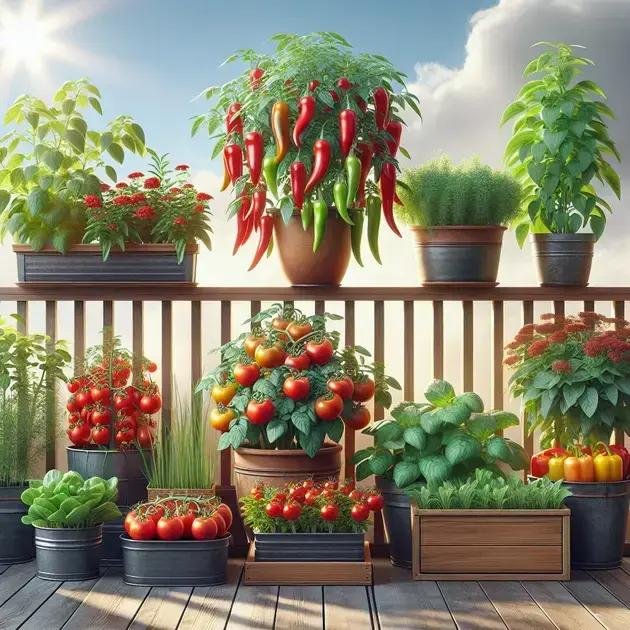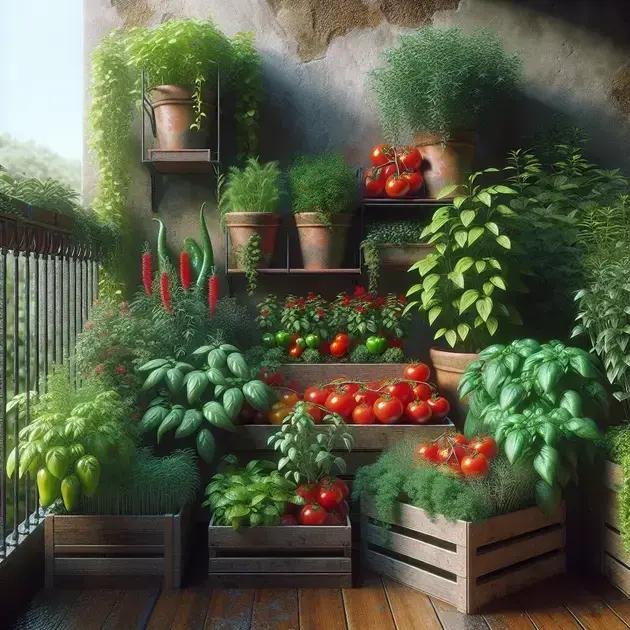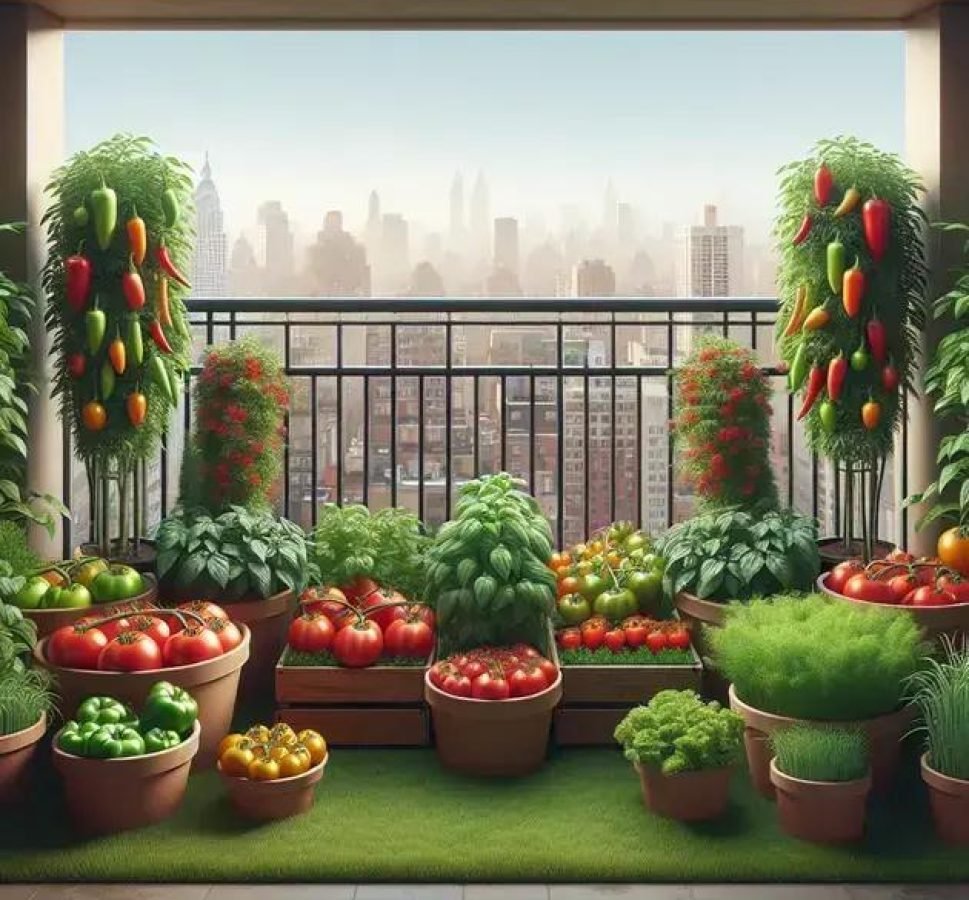Have you ever wondered which vegetables in containers are easiest to grow? Let’s explore five top picks that thrive beautifully.
Choosing the right containers for vegetables
Choosing the right containers is crucial for growing thriving vegetables. The first step is to consider the size of the container. Depending on the vegetable, containers should be large enough to accommodate root growth. Smaller plants like herbs and lettuce might do well in smaller pots, while larger plants such as tomatoes need more space.
Material Matters
Another important factor is the material of the container. Options range from terracotta and ceramic to plastic and metal. Each material has its pros and cons; for example, terracotta is breathable, but it dries out quickly, whereas plastic retains moisture but can get very hot under the sun.
Drainage
Regardless of size and material, drainage is essential. Ensure that your containers have adequate drainage holes to prevent waterlogging, which can lead to root rot. Consider placing a saucer under the pot to catch excess water.
Lastly, don’t forget about mobility. If your garden requires frequent rearrangement for sunlight or weather protection, choose containers that are not overly heavy or invest in ones with built-in wheels.
Essential soil mix for container gardening

One of the keys to successful container gardening is using the right soil mix. Unlike garden soil, which is typically too dense for containers, a proper mix promotes better drainage and aeration. Start with a base of potting soil, which is usually a mixture of peat moss, vermiculite, and perlite.
Composition
Peat moss retains moisture while providing structure, and vermiculite enhances water retention. Meanwhile, perlite ensures that the soil doesn’t become too compacted by improving drainage. This combination helps maintain a balance between retaining moisture and ensuring excess water can escape.
Additional Amendments
To further enrich your soil, you might add compost or aged manure for nutrients. Adding these amendments enhances fertility, providing your vegetables with the essential nutrients they need to thrive.
Regularly monitoring moisture levels with your finger or a probe will help you determine if your soil mix is performing well. Adjust the composition as needed to ensure optimal growing conditions for your vegetables.
Benefits of growing vegetables in containers
Growing vegetables in containers offers numerous advantages for home gardeners. One significant benefit is the flexibility in placement. You can position containers in spots with the best sun exposure, ensuring your plants get the light they need. This means you can grow vegetables on balconies, patios, or even indoors by windows.
Space Efficiency
Container gardening is ideal for those with limited space. Even if you don’t have a yard, you can still cultivate a variety of vegetables in compact areas. This method allows for efficient use of vertical and horizontal space, maximizing yield.
Pest Control
Pest management becomes easier with containers, as you can more effectively monitor and control infestations. Elevating plants off the ground can reduce access for common garden pests. Plus, you can move containers away from problem areas as needed.
Soil Control
Another benefit of container gardening is controlling the soil environment. You can customize soil mixes to match specific vegetable needs, ensuring optimal growth conditions. This control can lead to healthier plants and higher productivity.
Top 5 easy-to-grow vegetables

Starting with easy-to-grow vegetables can be a rewarding experience for both beginners and experienced gardeners. Lettuce is a great choice, thriving in containers and growing quickly. You can harvest leaves within weeks, and it requires simple care with regular watering.
Radishes
Radishes are another beginner-friendly option. They have a short growth cycle, usually ready to harvest in about a month. Plant them in loose soil, and water consistently for the best results.
Spinach
Spinach grows well in containers and offers a continuous harvest of leaves. It prefers cooler temperatures, making it ideal for early spring or fall planting. Ensure it gets plenty of moisture for lush, healthy growth.
Carrots
Certain carrot varieties, like baby carrots, are suited for container gardening. They need deeper pots to allow root development. Thin them out for good spacing and water evenly to prevent cracking.
Peppers
Peppers are versatile and come in many varieties, from sweet to spicy. They thrive in warm conditions and need full sun. Use a well-draining soil mix and a sturdy pot to support their growth.
Common mistakes to avoid
Container gardening can be rewarding, but avoiding common mistakes is crucial for success. One frequent error is overcrowding. Planting too many vegetables in one container can lead to competition for resources, stunting growth. Ensure each plant has enough space to develop properly.
Watering Errors
Improper watering, whether too much or too little, is another pitfall. Overwatering can drown roots, while underwatering can leave plants dehydrated. Check moisture levels regularly and adjust your watering schedule as needed.
Inadequate Drainage
Another issue is inadequate drainage. Without proper drainage holes, water can accumulate at the bottom of containers, leading to root rot. Make sure each pot has sufficient holes, and consider a layer of gravel for extra drainage.
Ignoring soil quality is also a mistake. Using garden soil instead of a well-aerated potting mix can restrict root growth. Invest in high-quality potting soil for the best results.
Tips for a successful container garden

Creating a thriving container garden requires careful attention to several key factors. Position your containers where they can receive adequate sunlight, usually a minimum of 6-8 hours daily. This is crucial for most vegetables to flourish.
Consistent Watering
Consistency in watering is essential. Soil in containers dries out more quickly than ground soil, so check moisture levels frequently. Water deeply until you see it draining from the bottom to ensure roots are thoroughly soaked.
Fertilization
Since nutrients in potting mixes deplete over time, regular fertilization is necessary. Consider using a balanced liquid fertilizer every 2-4 weeks to replenish essential nutrients the plants need for sustained growth.
Rotate plants periodically to ensure even growth and light distribution. Doing so can help prevent plants from leaning and ensure all sides receive an equal amount of sunlight.
Wrapping Up Your Container Gardening Journey
Embarking on a container gardening journey can be incredibly rewarding. With the right containers, soil, and selection of easy-to-grow vegetables, you can enjoy a thriving garden in any space. Remember to avoid common pitfalls like overcrowding and improper drainage.
Pay attention to consistent watering and fertilization, and make the most of your available sunlight. With these tips, you are well on your way to growing flourishing vegetables in containers, adding both beauty and bounty to your home.
Whether you’re a seasoned gardener or just starting, container gardening offers flexibility and the joy of homegrown produce. Dive in and watch your efforts grow into a luscious green oasis!





